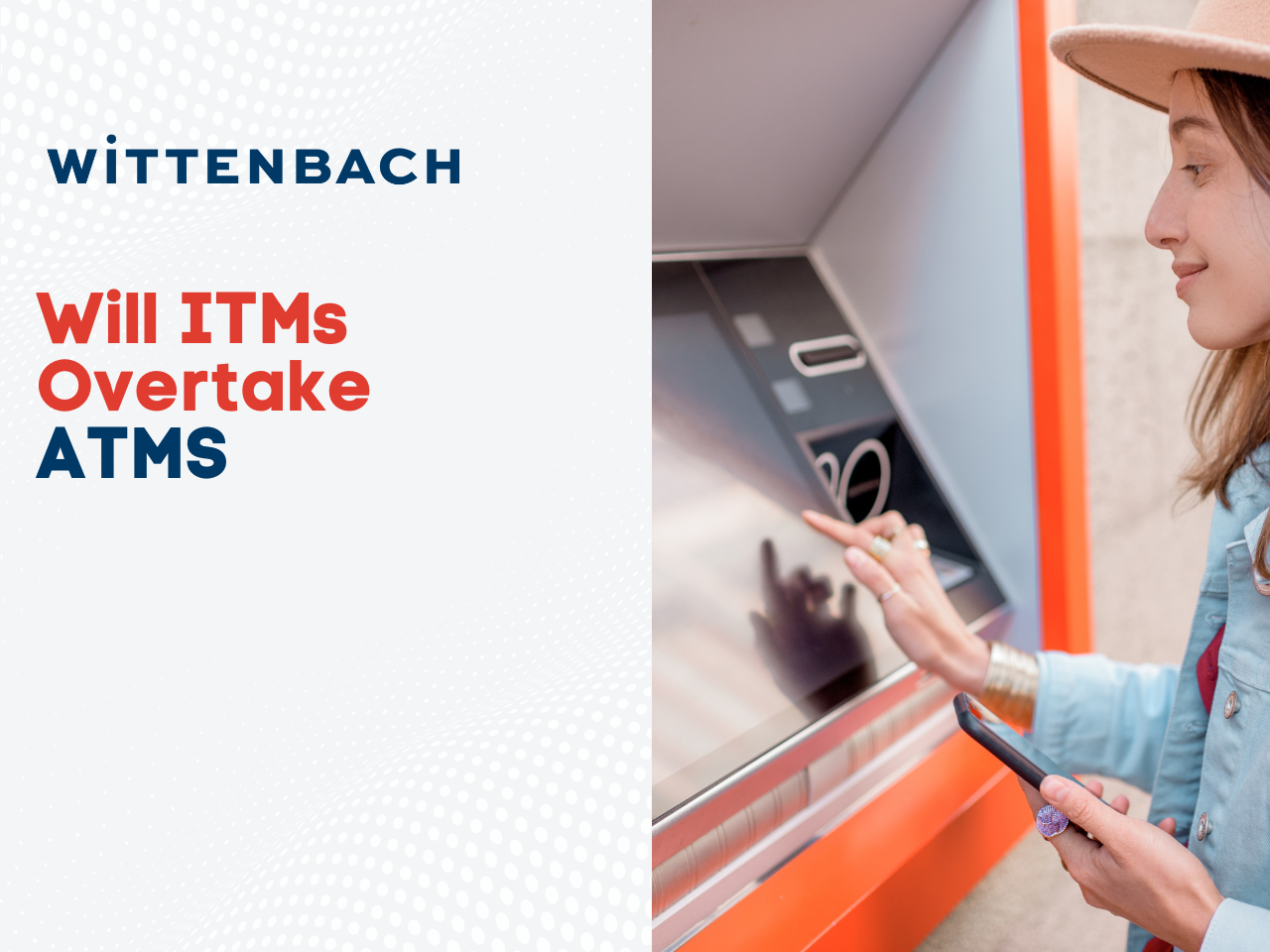With the rise in usage of interactive teller machines, or ITMs, it is plausible that automated teller machines, or ATMs, will become the minority. With their advanced functionality and security, ITMs are decidedly the future of quick transactions. However, there will always be a market for ATMs. Below, we will discuss the features and advantages of each, and outline our forecast for the applications and usage of ATM vs ITM machines across industries.
Comparing features and functionality: ITMs and ATMs
ITMs have become more popular in recent years, due to the advanced features they provide. ITMs are different from ATMs in that they offer real-time, virtual chats with actual tellers, as opposed to the automated teller experience offered by ATMs.
ATMs have been used for years by financial institutions and retail locations, as they made it possible to make both deposits and withdrawals without having to interact with an in-person teller or even enter a financial institution. This minimizes the amount of time taken out of the day for both the teller and client, without sacrificing any quality of service. Most prominently, they combine touch screens and video to offer an alternative banking experience, one which is both virtual and in real time. With an ITM, customers can start a video conversation with a live operator, or teller, who has the ability to be located anywhere in the world. Like a bank teller in a normal bank, the operator of an ITM can perform any number of transactions for the customer, and answer any questions they may have.
ITMs have been implemented outside of typical banking hours, in order to allow customers more flexibility in when they can be assisted. According to the American Bankers Association, Bankography surveyed a group of clients and received responses from 34 banks and 27 credit unions. Only 14 of the responding institutions were found to have implemented the technology. However, they also found that “60 percent of the remaining respondents cited some level of interest in ITMs, varying from the research phase to concrete plans for implementation in the next year or two.” As a result, it is clear that ITMs are emerging in the market.
In addition, ITMs also offer features such as a larger variety of bill denominations and extended hours of operations. However, ITMs are more expensive, as they possess advanced technology and require additional updates and upgrades as better software becomes available. According to Tellerex, a typical ATM package can be costly. However, these newer machines have better features, such as cash recycling, which is important because the funds can be replenished less frequently, which therefore saves time and maximizes profitability for the institution.
On the other hand, an ITM fleet costs much more than ATMs, but these costs are offset through the savings acquired once the machines are fully operational. Though implementing an ITM, or multiple, does involve typical training and planning, financial institutions using ITMs have a ratio of one call center service agent for every 2.4 ITMs.
Choosing between ITMs and ATMs depends on the needs and resources of the institution, including staffing ability and capability of implementing these machines, but each machine is a technologically advanced solution to many problems an institution may be facing.
Thus, it makes sense to ask the question of whether ITMs would be able to overtake ATMs. After all, with more advanced technology available, in addition to a more personalized experience, wouldn’t most customers prefer to utilize an ITM over an ATM?
Regarding security, ATM fleets age. This aging of the machines makes them more susceptible to criminal activity. ITMs are able to outpace criminals with updated technology. The ITMs provided by Hyosung Innovue are able to be updated with newer software, which improves their security measures.
Also, with increased technology, ITMs are able to provide more features to clients. For example, ITMs can offer the client the ability to make financial deposits and withdrawals, in addition to checking balances and making payments. Beyond the capabilities of an ATM, ITMs are able to sell loans and offer other services that require the involvement of bank tellers.
And though they are both used in different ways, it is possible for ITMs to overtake ATMs, knowing the rise in ITM usage. For example, grocery stores featuring bank or credit union branches can implement ITMs, and have the ability to provide personalized human interaction with a video teller without having to staff an entire branch.
However, there are still some situations where using an ATM over an ITM makes more sense. There will always exist situations more suited for simpler features, where having an ATM with limited functions makes more sense than implementing an expensive fleet of ITMs. For example, ATMs will remain relevant in restaurants, retail establishments, and other venues where advanced features are unnecessary and clients can collect transaction fees on cash withdrawals. In situations where a client simply requires the ability to withdraw or deposit cash, ATMs will prevail.
ITMs and ATMs: outfit your branch or business with leading-edge products from Wittenbach partners
Through Wittenbach partnerships with trusted industry leaders, we are able to recommend a few of the best machines for anyone looking to implement them within their own institution. The Hyosung Innovue 8000-series, including the MX8300D, MX8300T, and MX8300I offer the feature of cash recycling, which is crucial in reducing downtime. Cash recycling is a timeless feature which is not easily replaced by the software updates of an ITM.
Other ATMs we recommend include the MX8100 Cash Recycling ATM by Hyosung Innovue. This machine transforms branches because of its ability to handle 90% of banking transactions, and its size makes it possible for through-the-wall rear access for bankers and mechanics alike. It was also designed in order to be a front access lobby ATM, and has one of the smallest footprints for a cash recycling ATM.
ITMs we recommend include the Hyosung Innovue MX8800 Lobby ITM and the MX8200QTN. The MX8800 is similar to the MX8100 ATM, but is interactive. It has a built-in touchscreen tablet, and has rear access as well. It also comes with a standard coin dispenser for customers requiring exact change, in addition to a cash deposit cassette. The MX8200QTN has four cash recycling cassettes and has the ability to deposit up to ten checks at one time. It had a portrait-oriented touch screen and can be fitted as either a front access lobby machine or a rear wall access ITM. Both ITMs are revolutionary and will transform your branch.
In summary
Even as ITM machines rise in popularity, there will always be a place for ATMs. While, ITMs and ATMs each offer features that will benefit your institution — it’s important to explore which will work best for your customers. ITMs offer advanced technology and the ability for ITM tellers to chat with customers in real-time, but sometimes customers value the efficiency and convenience that ATMs offer over interactions with tellers, bankers or ITMs. For this reason, ITMs may be able to overtake ATMs in some areas, but not all. Contact Wittenbach for more information on ITM vs ATM options, or to schedule a consultation to find what’s best for your institution.




